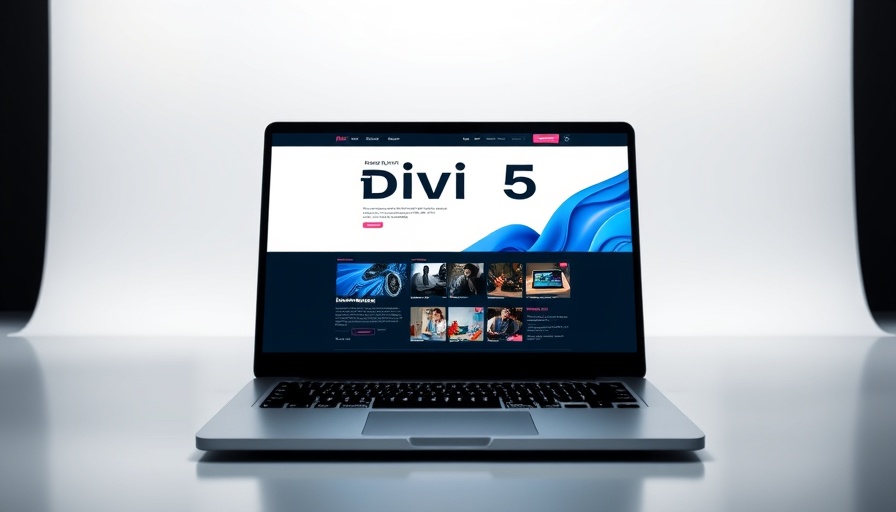
Unlocking the Power of Divi 5: A Game Changer for WordPress Users
With the release of Divi 5, web design flexibility reaches new heights. This all-new version has been meticulously rebuilt from the foundation up, focusing on unparalleled speed and functionality. For WordPress users constantly navigating the vast landscape of themes and plugins, Divi 5 serves as an indispensable tool for crafting stunning, responsive websites.
Speed and Performance: Why It Matters
As any seasoned developer knows, the performance of a website is crucial in today’s digital age. Users demand fast load times, and slow rendering can deter visitors cutting deeply into potential conversions. Divi 5 boasts lightning-fast performance, ensuring your site not only looks professional but also functions seamlessly. According to recent industry reports, a delay of just one second in load time can lead to a 7% reduction in conversions. Thus, investing in a platform like Divi 5 that prioritizes speed is essential for WordPress users who seek to optimize their websites for both traffic and engagement.
Innovative Features for Enhanced Workflow
The introduction of various innovative features in Divi 5, such as Design Variables and Preset-Based Design, signifies a shift toward a more efficient workflow. Design Variables allow users to implement site-wide style changes quickly, reducing the time spent on tedious design tasks. Furthermore, the Preset-Based Design feature provides an arsenal of styling options at your fingertips, enabling faster customization without compromising quality.
Nested Rows: Infinite Design Possibilities
Navigating layouts should feel intuitive, and Divi 5 presents an intriguing solution with its Nested Rows. This allows for infinite layout depths, providing WordPress users the flexibility to design as intricately or simply as desired. Whether creating complex multi-column layouts or straightforward designs, the Nested Rows feature helps make the design process smarter and less cumbersome, resulting in a more enjoyable user experience.
Revolutionizing Content with Divi AI
Another standout aspect of the updated interface is the innovative Divi AI. This feature can intelligently suggest design elements based on your content, streamlining the process of creating visually appealing pages. Integrating AI into the design process reflects a broader trend in web development, showcasing how technology can enhance creativity while maintaining the fundamental elements of user experience.
Final Thoughts on Leveraging Divi 5 Performance
In conclusion, Divi 5 emerges as a powerhouse for WordPress users, enhancing their ability to construct impressive websites with minimal effort. Its combination of speed, innovative features, and user-friendly design encapsulates the modern approach to web development. As one influential voice in the design community expressed, "Web design should empower creativity, not inhibit it." With Divi 5, this vision is not just accomplished; it’s propelled to new horizons.
If you’re ready to transform your web design experience, dive into the world of Divi 5 today. Discover ways to streamline your workflow, refine your designs, and ultimately improve your website’s performance. For more tips and tools, stay tuned to our blog, where we continuously explore strategies for successful WordPress website development!
 Add Row
Add Row  Add
Add 




Write A Comment